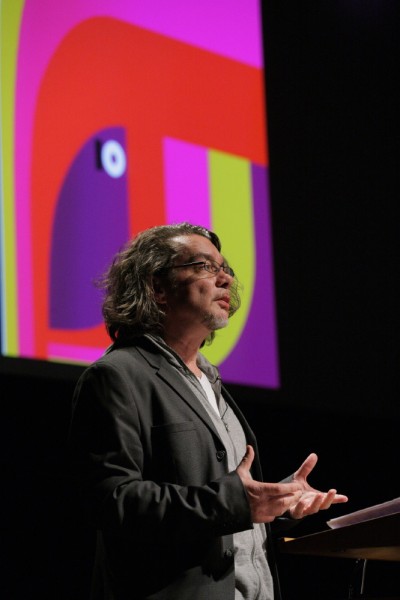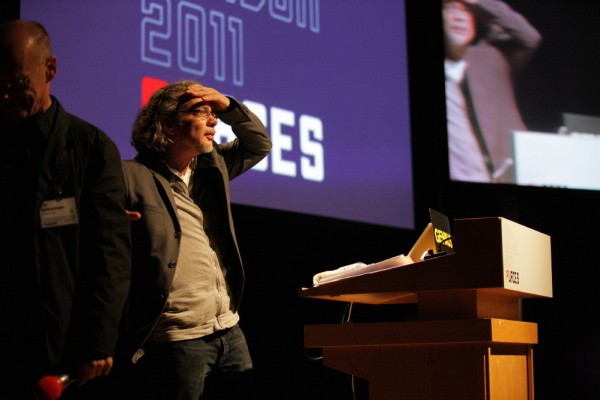A rare and special quality.
In the traditional platforms of print and typography the art of experimentation has been somewhat lost. Few studios are brave enough to be unexpected, for fear of ‘different’ not translating to ‘commercial’. Brody, like Fletcher before him, seems more focussed on whats good for design as a whole, refusing to believe we have discovered its boundaries, and asking new questions, not just answering old ones. Schemes such as the Anti-Design Festival did exactly that. Celebrating what design can be once the obstacles are removed, it embraced failure and by removing a preciousness about the work it promoted expression.
He spoke of rediscovering his passion for design and finding enjoyment from playing with type and image and form again. Talking politics, Brody passionately bemoaned the British government for allowing the gap between rich and poor to widen, unmatched for 150 years. Then predictably, as Head of Communication at the RCA, this focus shifted to the impact the current climate has had on education, with creative schooling being ‘demolished’ by lack of investment. Despite 8% of the countries GDP coming from creative industries, the next generation of designers and design thinkers are not being supported.
As newly elected President of D&AD, his ambition is to return the organisations focus back to ‘excellence supporting education’. Award winners will now be expected to reinvest in education by supporting and mentoring students — a smart solution for a failing system.Though much of the experimental typography is not to my taste, I think that’s the point — if the mass were to approve I think all involved in Fuse would be disappointed. It’s experimental, personal, often illegible, and therefore intentionally uncomfortable. For me typography has a fundamental purpose (and responsibility) and that is to communicate. Where Brody and Fuse are pushing type is beyond Graphic Design and into a more expressive artform of shapes and pattern.
Of all the contributions Brody showed from past editions of Fuse, Jason Bailey’s Sclerosis Script really stood out. His mother had suffered from MS since 16, a degenerative disease that impairs the basic ability to communicate. By digitising his mothers best attempt to draw the alphabet into a font he created a powerful, personal statement. The fact that it’s illegible really is the point, as it communicates a far bigger problem.

Neville Brody
Text —Matt Judge — Design Assembly























Pingback: Fontblog | TYPO London 2011 im Rückblick